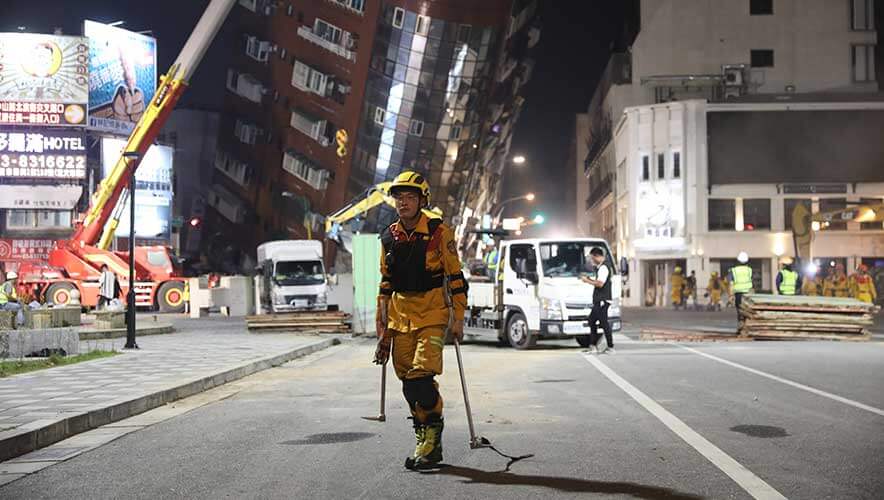Taiwan Earthquake Preparations Result in Low Casualties During Latest Major Quake
Rescue efforts in Taiwan continue after a 7.4-magnitude earthquake in the eastern part of the country has left at least 10 people dead, more than 1,000 injured, and more than 40 missing. More than 600 people were stranded by the quake, either in a quarry or nearby mountain gorges, and tsunami warnings were issued to nearby nations.
The earthquake inflicted the most damage on Taiwan’s Hualien County, including toppling buildings and triggering landslides. Aftershocks are expected to continue impacting the area until the end of the week, some of them as strong as 7 in magnitude.
“By midday Thursday, all 64 people stranded at the Heping quarry had been safely evacuated, the fire agency said. Video showed rocks and debris across a trail leading to the site,” CNN reported.
The earthquake, which occurred on the morning of 3 April, is reported to be the strongest to hit the island nation in 25 years. Despite the earthquake’s ferocity, the death toll could have been much higher and the damage far worse.
In 1999, a 7.6-magnitude quake struck Taiwan, killing 2,400 people. It is considered one of the worst the nation had ever experienced and triggered authorities to institute stricter building codes, according to The Washington Post.
“Those efforts could explain Wednesday’s relatively low death toll. Lu Chin-wen, an architect who helped with reconstruction after the 1999 quake, said structures built according to the new regulations were stronger and that may have helped,” the Post reported. “…Since 2019, the government has been reviewing 36,000 buildings across Taiwan that were built before 1999 and providing subsidies to upgrade them.”
Updated codes for Taiwan’s buildings include stronger steel rebar designs reinforced by concrete, as well as stronger building foundations, an earthquake alert system, and regular public earthquake drills. With this latest earthquake, less than 100 buildings were damaged or destroyed.
The improvements were not isolated to buildings. Disaster responses were analyzed and reorganized, and existing bridges were retrofitted and reinforced, according to NPR.
“Taiwan also is pushing quake drills at schools and workplaces while public media and cellphones regularly carry notices about earthquakes and safety,” the Associated Press reported.
Taipei, home to the country’s tallest skyscraper, also felt the earthquake. However the building and the people inside its 101 stories were unharmed. The building, Taipei 101, contains a large yellow pendulum—a 730-ton steel ball that moves back and forth during seismic events to absorb the shock by up to 40 percent.
Since Wednesday’s earthquake, more than 76 aftershocks have been reported, some as high as 6.4 in magnitude. But most of the city’s populace has returned to a daily routine, and train service through the quake’s epicenter has resumed.
Taiwan is within a part of the Pacific Ocean that includes the Ring of Fire—Earth’s most seismically active area, accounting for 90 percent of the planet’s earthquakes. The nation experiences more than 2,000 small quakes per year.











